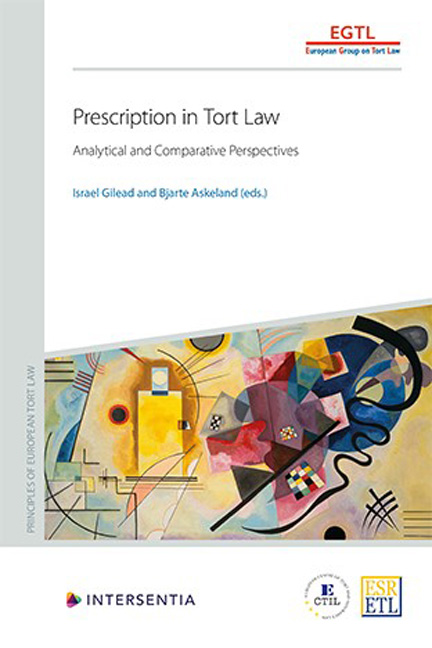Book contents
- Frontmatter
- Dedication
- Acknowledgements
- Contents
- List of Authors
- PART I THEORETICAL AND COMPARATIVE ANALYSES
- Analytical and Comparative Report
- Economic Analysis
- PART II PRESCRIPTION IN TORT LAW OUTLINED
- Case Scenarios
- Austria
- Belgium
- Czech Republic
- England and Wales
- France
- Germany
- Greece
- Italy
- The Netherlands
- Norway
- Poland
- South Africa
- Spain
- Switzerland
- United States
- European Union
- Appendix: Questionnaire
- About the Editors
Poland
Published online by Cambridge University Press: 22 December 2020
- Frontmatter
- Dedication
- Acknowledgements
- Contents
- List of Authors
- PART I THEORETICAL AND COMPARATIVE ANALYSES
- Analytical and Comparative Report
- Economic Analysis
- PART II PRESCRIPTION IN TORT LAW OUTLINED
- Case Scenarios
- Austria
- Belgium
- Czech Republic
- England and Wales
- France
- Germany
- Greece
- Italy
- The Netherlands
- Norway
- Poland
- South Africa
- Spain
- Switzerland
- United States
- European Union
- Appendix: Questionnaire
- About the Editors
Summary
INTRODUCTION
Polish law knows two types of limitation of claims or rights linked to the lapse of time:‘absolute time/preclusion limits‘(terminy zawite) and prescription (terminy przedawnienia). The so-called extinctive prescription (as it is understood in the French legal doctrine) is thus dichotomous. The origins of the dichotomy are found in the history of Polish private law. There is, however, a terminological chaos which has influenced theoretical analyses until today.
The group of preclusion periods, lacks a general regulation or even systematisation. They are scattered all over civil law, except for tort law, and are imposed by the law on various claims or actions, whether patrimonial or non-patrimonial, to seek court remedy or to seek remedy outside the court system, including a right of withdrawal or cancellation of contract concluded under error, a right to selfhelp in order to protect possession of a thing, some of the warranty claims or claims, pleas and objections as to the civil proceedings. The rights or entitlements extinct after the lapse of time (typically very short). If despite the time lapse, the creditor demands the performance or files an action, the court will ex officio reject the demand or action. Hence, this type of extinctive period which results in extinguishing a substantive claim/right recalls a limitation of action as it is understood in common law. It is more procedural in nature; at the same time, it should not be confused with purely procedural time limits imposed by the law or by a court in a civil process.
The second type of limitations of claims is prescription (przedawnienie), which leads to the non-enforcement of a right. Historically speaking, the true prescription was confused with time-limits leading to complete extinction of claims. Accordingly, under the Code of Obligations of 1933 [ kodeks zobowiązań, KZ], the lapse of a period of time stipulated by the law could bring about one of two consequences: the termination of the right or the barring of a remedy, depending on the exact wording of a rule.
- Type
- Chapter
- Information
- Prescription in Tort LawAnalytical and Comparative Perspectives, pp. 515 - 548Publisher: IntersentiaPrint publication year: 2020

